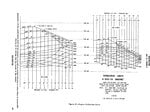... on the tech and fuel as available between 1935-45.
Main 3 engine types that I'm interested: Perseus (sleeve-valve type) and Mercury and of 24.9L, Pegasus of 28.7L, later two with poppet valves. For comparison, Wright managed to push the 29.9L R-1820 to 1300-1350 HP without water injection by 1944, on 2800 rpm and 46.5 in Hg (a bit above +8 psi) for the 1300 HP -56 version. You can 'kill' Aquila and Taurus to balance the need for more development of the listed engines in second half of 1930s.
Improvement of supercharging, at least as what Bristol can do, is also needed.
Finally, once the engines are there, where to install them?
Bore and stroke remain as-is.
Main 3 engine types that I'm interested: Perseus (sleeve-valve type) and Mercury and of 24.9L, Pegasus of 28.7L, later two with poppet valves. For comparison, Wright managed to push the 29.9L R-1820 to 1300-1350 HP without water injection by 1944, on 2800 rpm and 46.5 in Hg (a bit above +8 psi) for the 1300 HP -56 version. You can 'kill' Aquila and Taurus to balance the need for more development of the listed engines in second half of 1930s.
Improvement of supercharging, at least as what Bristol can do, is also needed.
Finally, once the engines are there, where to install them?
Bore and stroke remain as-is.

